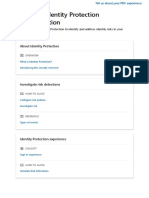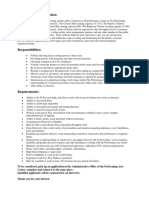0% found this document useful (0 votes)
32 views2 pagesNetwork Admin Interview Questions
The document provides a comprehensive overview of network administration interview questions and answers, covering topics such as the differences between hubs, switches, and routers, subnetting, troubleshooting connectivity issues, and the roles of TCP and UDP. It also discusses NAT, VLANs, network security measures, the OSI model, and DHCP. Each section includes concise definitions and explanations to aid understanding of fundamental networking concepts.
Uploaded by
staffdewaCopyright
© © All Rights Reserved
We take content rights seriously. If you suspect this is your content, claim it here.
Available Formats
Download as PDF, TXT or read online on Scribd
0% found this document useful (0 votes)
32 views2 pagesNetwork Admin Interview Questions
The document provides a comprehensive overview of network administration interview questions and answers, covering topics such as the differences between hubs, switches, and routers, subnetting, troubleshooting connectivity issues, and the roles of TCP and UDP. It also discusses NAT, VLANs, network security measures, the OSI model, and DHCP. Each section includes concise definitions and explanations to aid understanding of fundamental networking concepts.
Uploaded by
staffdewaCopyright
© © All Rights Reserved
We take content rights seriously. If you suspect this is your content, claim it here.
Available Formats
Download as PDF, TXT or read online on Scribd
/ 2





































































































